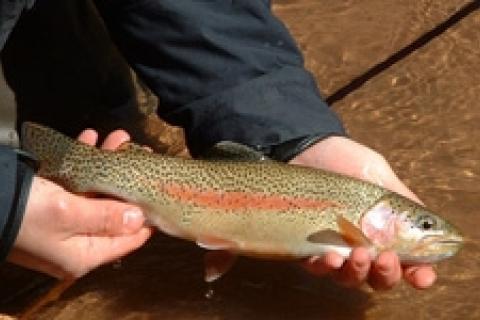
 Congregated on the bottom of trout streams throughout the Midwest are a special variety of aquatic invertebrates called caddisflies. After the early season flood of mayfly hatches, caddisflies become the dominant food source available, and the primary target for trout.
Congregated on the bottom of trout streams throughout the Midwest are a special variety of aquatic invertebrates called caddisflies. After the early season flood of mayfly hatches, caddisflies become the dominant food source available, and the primary target for trout.
Caddisflies in general are known for building casings of sticks, stones and/or aquatic vegetation where they spend their larva stage. Caddis cases can be found clinging to the bottoms of rocks or submerged wood. These critters are a high priority in a trout's diet as they are readily available and easy to feed on.
Caddisflies hatch throughout the spring, summer and fall seasons. For the fly fisherman, caddis patterns are a necessity. Caddises can be found in varying color and sizes. At the upper end of the size range caddisflies can get to over an inch long and at the smallest they can be under a 1/4 inch. Regardless of the size, trout feed greedily on caddises as they make their journey from the river bottom to the sky.
Fishing success for anglers can be greatly improved by recognition of the specific caddis species on the water. No you don't have to know the family or genus, but correctly matching the size, color and behavior of the caddisflies will equal more fish on the end of your line.
Trout feeding on adult caddis wait for the flies to bounce on the water's surface and time their strikes. If you see a fish actively feeding, cast directly to the feeding trout and dead drift your fly. It might take a few casts to convince the fish to bite, so don't give up too easy! Some caddisflies actually dive underwater to lay their eggs, so pulling your fly under the surface a time or two can stimulate a strike. If you see caddisflies hatching but no activity on the surface, try waiting for the fish to become active on the surface. Sometimes it doesn't happen until dark or early the next morning but fish will feed on these critters as they return to the river.
Keep an eye on the hatch calendar and spend some time on the water waiting for the caddisfly activity to heat up. Fishing the hatches will be some of easiest, most productive and fun dry fly fishing of the year.
- 2638 views

